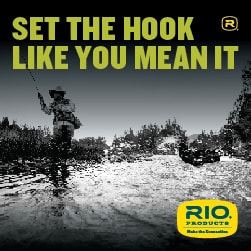Restore the Elwha without hatchery fish
 Wednesday, July 13, 2011 at 12:03AM
Wednesday, July 13, 2011 at 12:03AM 
The removal of the Elwha Dams is not only the the largest dam removal project of it's kind U.S. history, it also creates an opportunity to restore the Elwah's legendary historic runs of wild salmon and steelhead. Unfortunately a large federally subsidized hatchery operated by the Lower Elwha Kallam Tribe will be used to plant steelhead, chinook and other salmon species, threatening the future of wild fish in the basin.
Will Atlas chair of the Federation of Fly Fishers Steelhead Committee, Kurt Beardslee Executive Director of the Wild Fish Conservancy and Rich Simms President of the Wild Steelhead Coalition have authored an opinion piece in the Seattle Times that spells out exactly why this is a monumental mistake.
WITH removal of the Elwha River dams scheduled to begin this summer, the river can demonstrate a new paradigm for sustainable salmon management based upon wild fish, rather than hatchery production.
The dam removal will open up about 90 miles of protected river for spawning fish. Given the amount and quality of the habitat, biologists predict tens of thousands of wild salmon and steelhead could eventually return to the Elwha River above the dams within our children's lifetimes. The recovery will reach its full potential only if hatchery fish are removed from the Elwha.
On the Elwha we have an opportunity to restore wild salmon and steelhead to a pristine river unlike any remaining in our state. Before dam construction in 1910, the river supported robust populations of steelhead and five different species of salmon, including some of the largest chinook ever documented.
Given time and conservative harvest management, there is reason to believe that within a few decades we will see those magnificent fish return in similar numbers. Unfortunately, we are poised to squander what would otherwise be a tremendous opportunity.
Each year, Washington state releases hundreds of millions of juvenile salmon and steelhead from hatcheries to supplement sport and commercial fisheries. These releases are known to be harmful to wild stocks: interbreeding with wild fish, altering their genetic makeup and reducing the survival of their offspring; competing for space and resources; introducing disease; attracting predators; encouraging overfishing, to cite just a few deleterious impacts. Countless researchers have confirmed that hatchery programs are incompatible with healthy, abundant wild salmon and steelhead.
The stated goal of the Elwha River dam removal is to restore healthy populations of wild salmon and steelhead to the watershed. Yet despite an overwhelming body of evidence confirming the harmful impacts of hatcheries, state, federal and tribal governments have agreed upon a plan that relies heavily on hatchery supplementation. Faced with the single greatest opportunity to restore wild salmon, they've opted for business as usual, perpetuating a failing paradigm of replacing native fish with a man-made alternative.
The Lower Elwha Klallam Tribe, long advocates for dam removal in the watershed, have built a huge, new hatchery which will be used to plant steelhead, chinook and other salmon species, threatening the future of wild fish in the basin. These fish, bred in captivity, are no longer able to produce self-sustaining numbers of offspring when spawning in the wild. Consequently, large numbers of hatchery fish spawning in a river can greatly reduce the productivity of wild stocks.
A five-year fishing moratorium is scheduled to take effect this year, yet managers have been adamant about continuing to release hatchery steelhead and salmon into the Elwha, despite the fact that none will be caught in sport or commercial fisheries. Instead, these nonnative fish will return to spawn with the few remaining wild fish that have managed to keep a tenuous foothold below the dams.
For decades, hatchery salmon and steelhead have sustained tribal fisheries on the Elwha. Understandably, the tribe fears that without hatcheries they will no longer have opportunities to fish. While we believe strongly that the Lower Elwha Klallam tribe should have the opportunity to fish in accordance with their treaty rights, continuing to release nonnative hatchery fish in the Elwha throughout the recovery period is wrongheaded and counterproductive.
The Elwha River restoration is an opportunity to see the capacity of wild salmon and steelhead to recover without costly, ineffective hatchery intervention.
If we hope to restore the Elwha to its former glory, we must let wild fish recolonize the river naturally. For generations, the river sustained the Lower Elwha Klallam tribe and, unlike many rivers in our region, the wild Elwha remains more than capable of giving life to its people and standing as a singular example of a world-class wild fish-restoration project, one that will ultimately allow wild salmon and steelhead to return to levels unthinkable in the 21st century.
It's time we get out of the fishes' way.
There will be lots more coming on this issue in the future.







